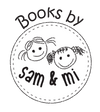
Importance of Child-Led Play (Part 2 of 2)
In the previous article, we talked about the importance of play in a toddler’s life and how it helps develop their social, emotional, and physical skills. We also discussed how to have a playful approach to learning and the role of parents in a toddler’s play journey. In this post, we will take the discussion further and talk about the significance of child-led play.
What do you do after you have introduced the concept of play to your child? Does the learning end there or is there more to it? How do you ensure your child leads the games they play? Once your child is engaged in play, it is important to allow them to slowly LEAD the play space. You may be wondering why! Well, because you will be organically teaching them to make choices at an early age. Learning how to make choices in the initial years teaches children to handle disappointment, regulate emotions, understand consequences of actions, gain confidence, and feel empowered.
The Importance of Making Choices at an Early Age
The ability to make decisions is an important life skill. When you let your child make a choice, you empower them to express their individuality and take control of a situation. you instill self-awareness and confidence in them while honing their creative and critical thinking skills. Ask your little ones to choose between two pairs of socks and shoes, let them choose the fruit they’d like to have out of two given options, let them decide if they want to play with blocks or read storybooks. Children are creative in their thought process. By letting them make a choice, you motivate them, make them feel empowered, develop their self-confidence and analytical skills, and eventually shape their learning journey.
The Concept of Child-led Play
Child-led play, also known as child-directed play or free play, is a form of play in which a child makes the decision when engaging in play. It is an open-ended and creative process that gives children the freedom to play, explore and discover. Free play is crucial to a child’s health and wellbeing. One of the key ways to encourage child-led play is to only engage in play when a child asks you to join a game they are interested in but not direct them. Not only will this inspire your child to take the initiative in choosing an activity but they will also gain confidence and learn to be independent. Child-led play instills in a child a sense of ownership of the game they are playing and they master new personal skills. Here are some ways to go about it:
- Allow your child to take the lead
- Let your child find solutions to problems on their own
- Let them use their creative imagination
- Allow them the space to transform their feelings into actions
- Validate their efforts
A great way to encourage child-led play is to suggest simple projects: Once your child proposes a solution, instead of labeling it as right or wrong, help them see what will work and for how long. For instance, you can ask your child how to make a bridge on top of two block towers or how to use a sock to store their blocks. According to the LEGO Foundation, adults need to recognise the benefits of free play, and foster it by providing the time and environment.
Eventually, you can translate the skills from child-led play into daily life by empowering them to make choices. For instance, if a toy breaks, you can ask them what they would like to do with it: fix it, throw it or find a new use for it. Another example is to use the things in their room to dress up as a doctor or a fireman. This is play for the child and while making these choices, your child begins to think critically: How best to make use of a broken toy or how to dress up like a doctor/fireman. Give them clues, help them in their problems and see what they come up with.
Finally, when they’re at it, don’t interrupt them, which might hinder their concentration. Instruct only when it is absolutely necessary. Allow them the time and space to play without restriction, thus letting their imagination run free. Let them get to like the game they are playing so it can become part of their everyday life.
A Fun Book Series for Your Toddlers
To help your child in their playful journey, we have curated our “How to Play” series of books that cater to the age segment of 0-3-year-olds. Richly illustrated and thoughtfully crafted for toddlers, the books encourage learning through play and help achieve developmental milestones such as cognitive thinking, independent play, motor control, sensory processing, spatial awareness, emotional regulation and self-confidence. Most importantly though, the book encourages child-led play. Order your copy now How To Play Series
Sources: An article from UNICEF -Lego-Foundation on learning through Play
An article from Seattle Children’s Hospital on Child Development and Parenting

